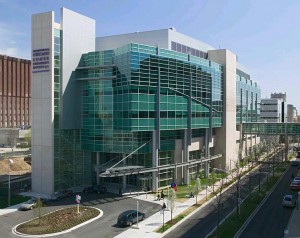According to a 2012 Environment Canada report, electricity and buildings were responsible for 25% of Canada’s greenhouse gas emissions in 2010. Designing energy efficient buildings and retrofitting existing buildings to increase their energy efficiency is a growing concern for architects. However a recent article in Environment and Energy Publishing reiterates the need to consider the microbial environment in …
Abstracts are sought to address building science issues in the Alfred P. Sloan Foundation’s program, Microbiology of the Built Environment. The Sloan Foundation is sponsoring a symposium as an important part of the conference. The emphasis of the Sloan Symposium will be on the building science aspects of studies of the indoor microbiome — in …
Italian architect Carlo Ratti, Director of the MIT SENSEable Cities Lab, presents an entertaining Ted Talk “Architecture that senses and responds” on the use of sensors in buildings to monitor occupant behavior and environmental conditions for input to the management of the buildings and other human-made systems. Once we know the critical environmental variables that …
Building Information Research Knowldgebase – BRIK is a useful site for all kinds of architecture-oriented research. Here’s a link to the database of built environment research hosted by AIA with NIBS: http://www.brikbase.org/. Self-described as “your information portal to professionally reviewed research in the built environment for professionals by professionals” Here is an example of a …
Sloan Symposium at Indoor Air 2014 The Alfred P. Sloan Foundation Program on Microbiology of the Built Environment has awarded a grant to Indoor Air 2014, the 13th International Conference on Indoor Air Quality and Climate, to be held in Hong Kong from July 7-12, 2014. Paraphrasing a quote on the conference web site from …
Does heavy drinking affect the bacteria in your living room air? I don’t know, but some work I saw at ASM suggests that it might. At the poster session on Day 3, Valdis Krumins from Rutgers had a poster reporting efforts to understand the effect on airborne bacterial concentrations (or, at least, their ribosomal 16S …
Just kidding; I paid to get in, but this conference is not intended for a research architect/building scientist like me. This was my third ASM meeting, and now I know something approaching 1% of the jargon, so I was able to “mine” the sessions, especially the posters, for built-environment-relevant content. Under the surface of the …
The University of Chicago has just opened a massive new hospital on the university campus. Jack Gilbert is PI on a study of the evolution of the hospital microbiome funded by the Sloan Foundation. The evolution of the microbiomes in a set of hospital rooms is being studied continuously beginning before the hospital accepted the …
Many reliable and credible scientific journals related to building science most relevant to the microbiology of the built environment are listed here. These are selected based on our personal experience and judgment and do not constitute a comprehensive or definitive list. Indoor Air — International Journal of Indoor Environment and Health Indoor Air provides a …
Well this is both weird and very interesting: 3D houses “grown” like bones | SmartPlanet. Sort of a combination of 3D printing, bioinspired design, and architecture. Not sure what the future of this is but if they want to have walls that grow / respond to stresses they could consider making them actually alive. Maybe it …

